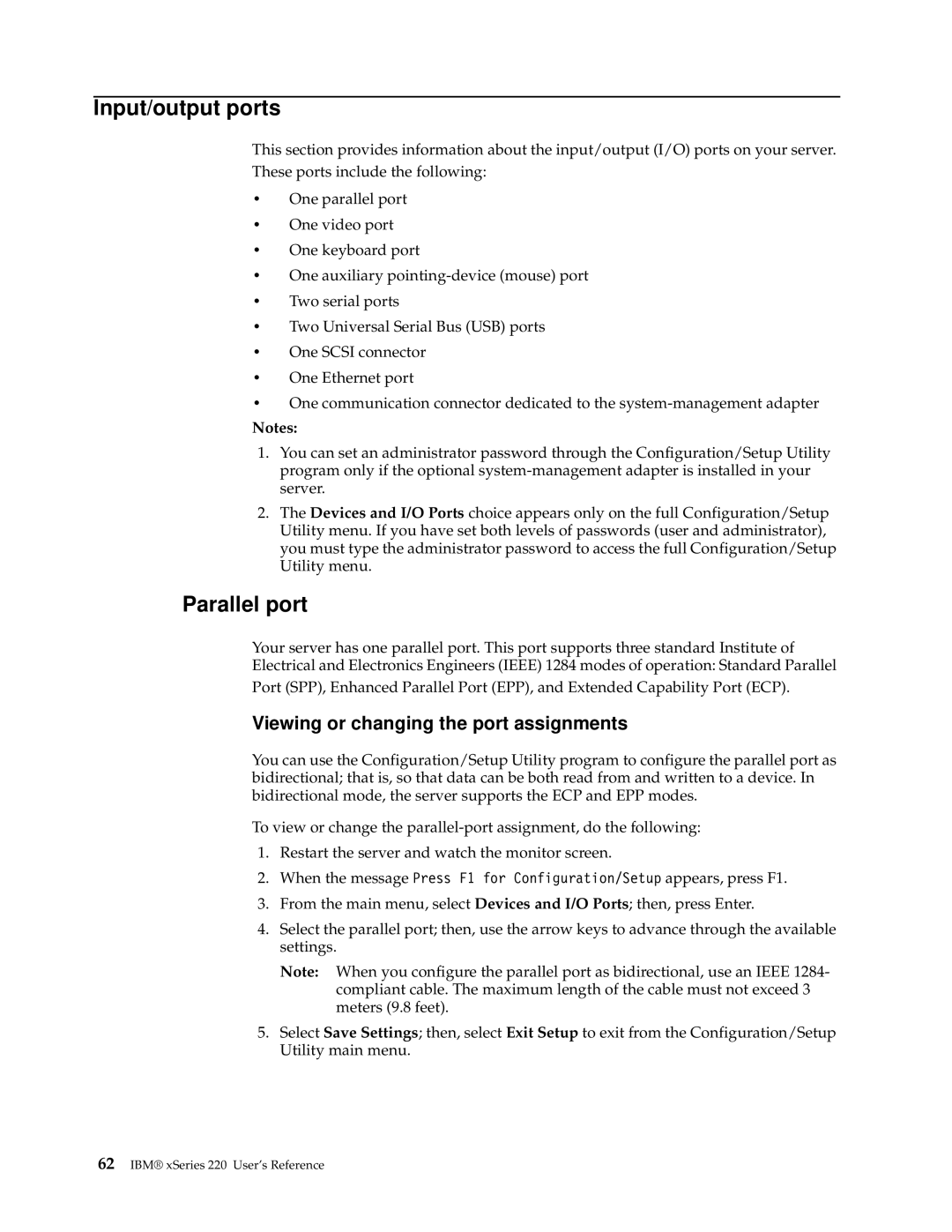Input/output ports
This section provides information about the input/output (I/O) ports on your server. These ports include the following:
•One parallel port
•One video port
•One keyboard port
•One auxiliary
•Two serial ports
•Two Universal Serial Bus (USB) ports
•One SCSI connector
•One Ethernet port
•One communication connector dedicated to the
Notes:
1.You can set an administrator password through the Configuration/Setup Utility program only if the optional
2.The Devices and I/O Ports choice appears only on the full Configuration/Setup Utility menu. If you have set both levels of passwords (user and administrator), you must type the administrator password to access the full Configuration/Setup Utility menu.
Parallel port
Your server has one parallel port. This port supports three standard Institute of Electrical and Electronics Engineers (IEEE) 1284 modes of operation: Standard Parallel
Port (SPP), Enhanced Parallel Port (EPP), and Extended Capability Port (ECP).
Viewing or changing the port assignments
You can use the Configuration/Setup Utility program to configure the parallel port as bidirectional; that is, so that data can be both read from and written to a device. In bidirectional mode, the server supports the ECP and EPP modes.
To view or change the
1.Restart the server and watch the monitor screen.
2.When the message Press F1 for Configuration/Setup appears, press F1.
3.From the main menu, select Devices and I/O Ports; then, press Enter.
4.Select the parallel port; then, use the arrow keys to advance through the available settings.
Note: When you configure the parallel port as bidirectional, use an IEEE 1284- compliant cable. The maximum length of the cable must not exceed 3 meters (9.8 feet).
5.Select Save Settings; then, select Exit Setup to exit from the Configuration/Setup Utility main menu.
